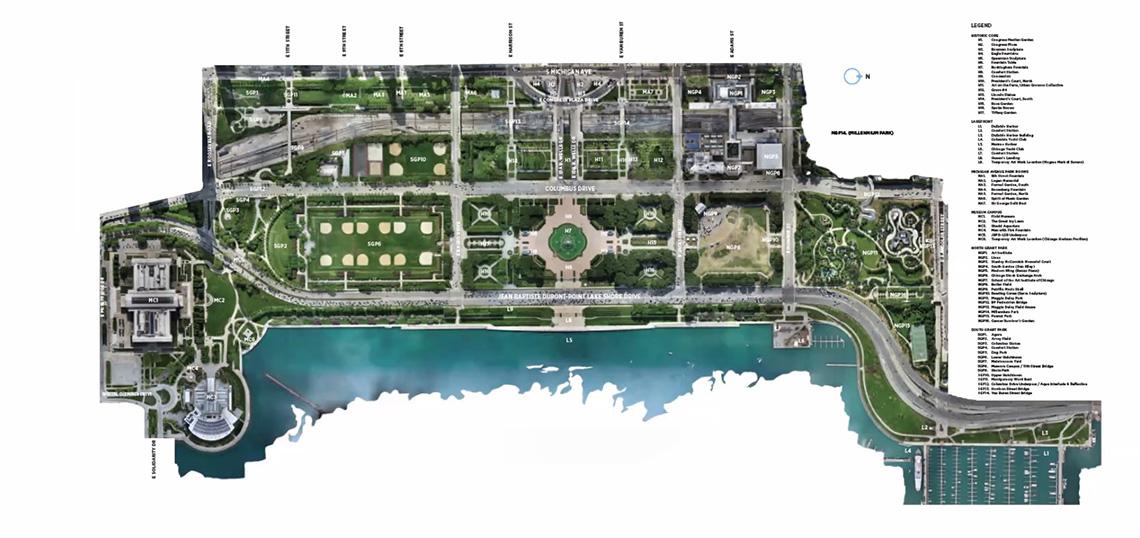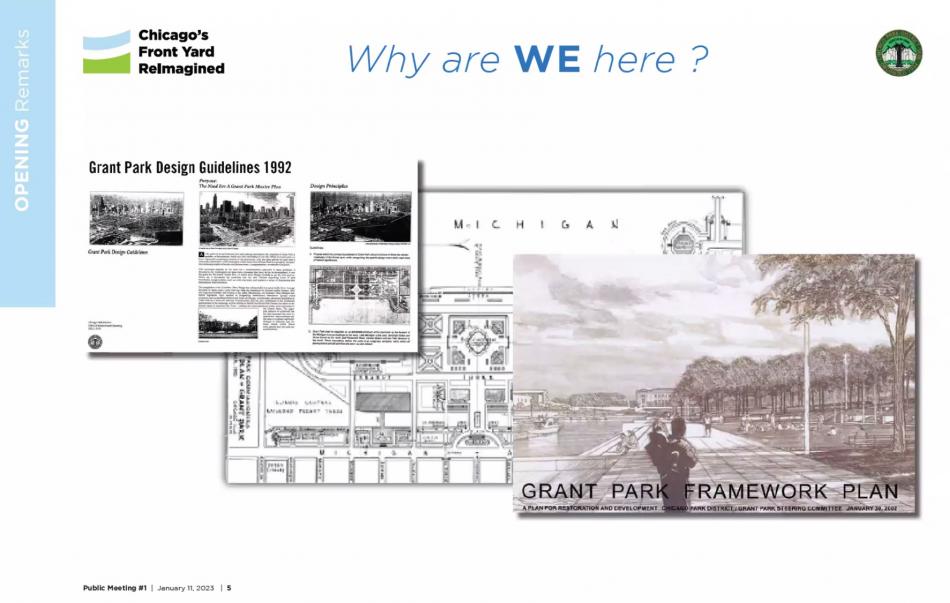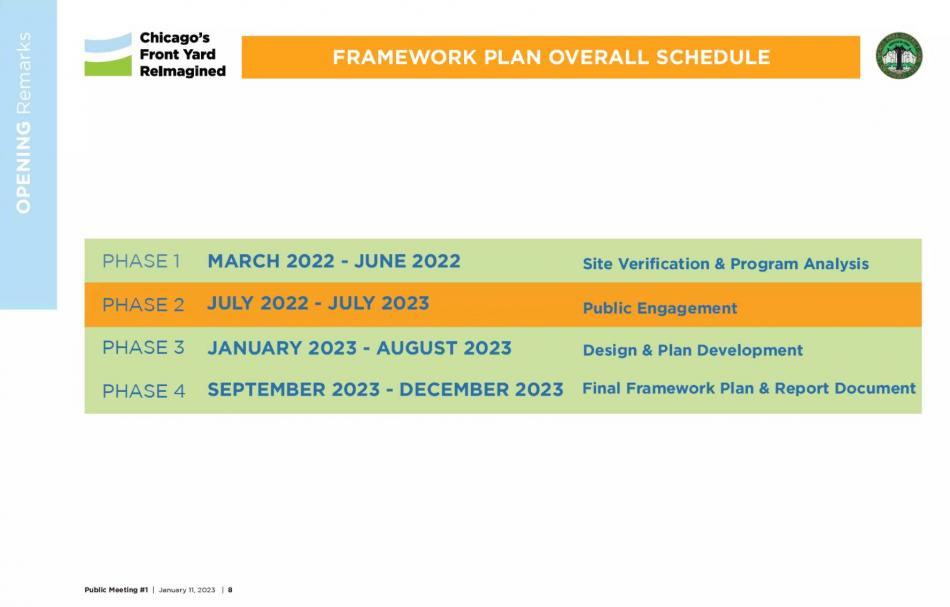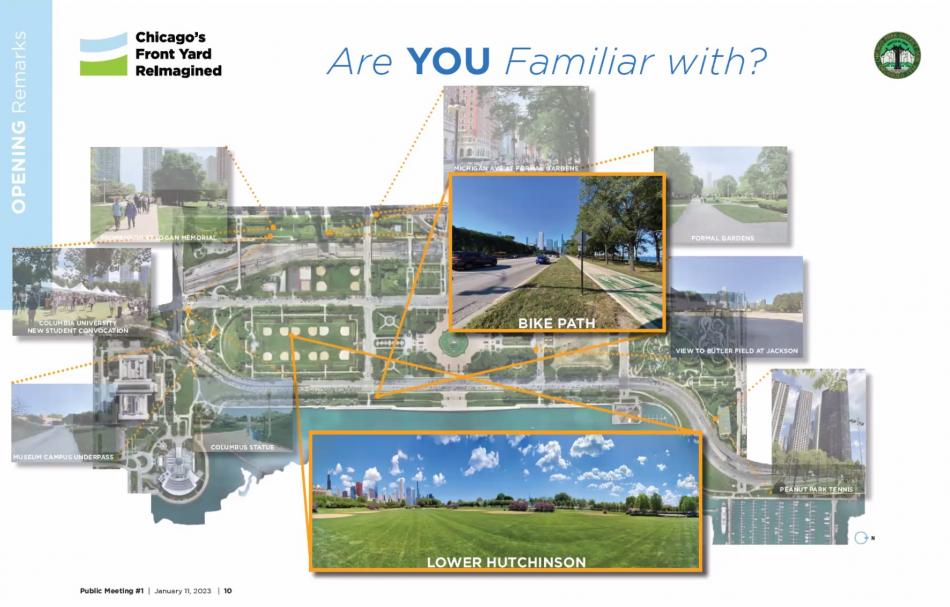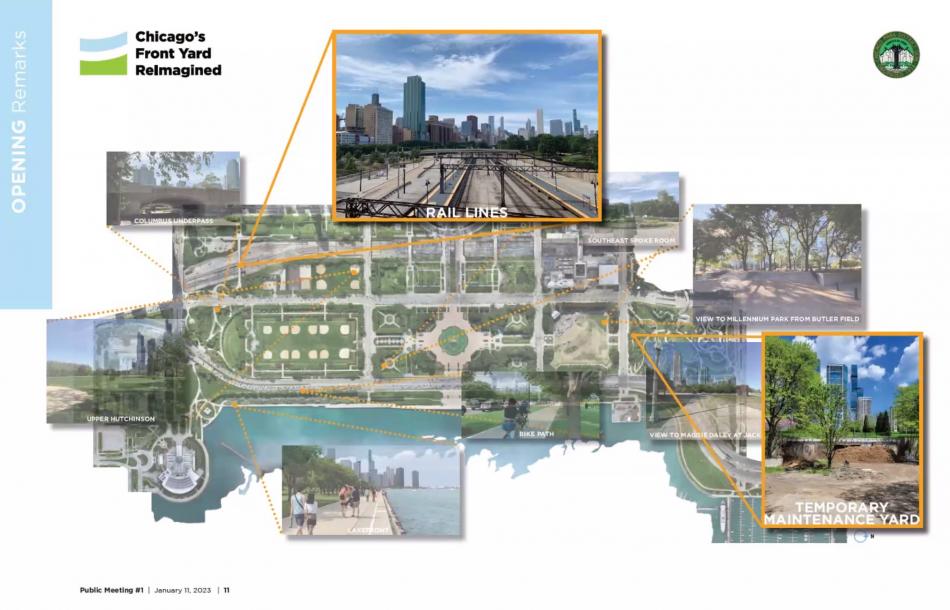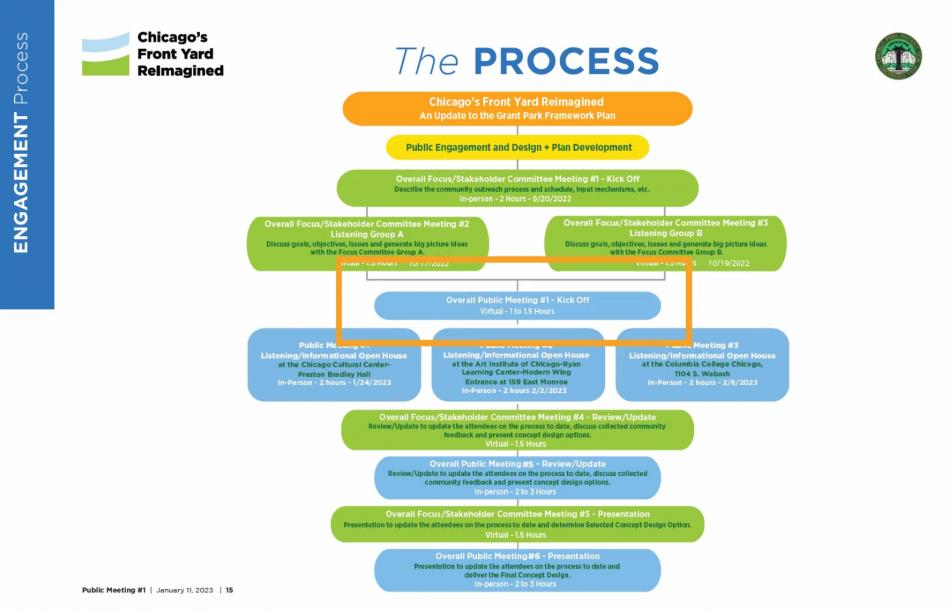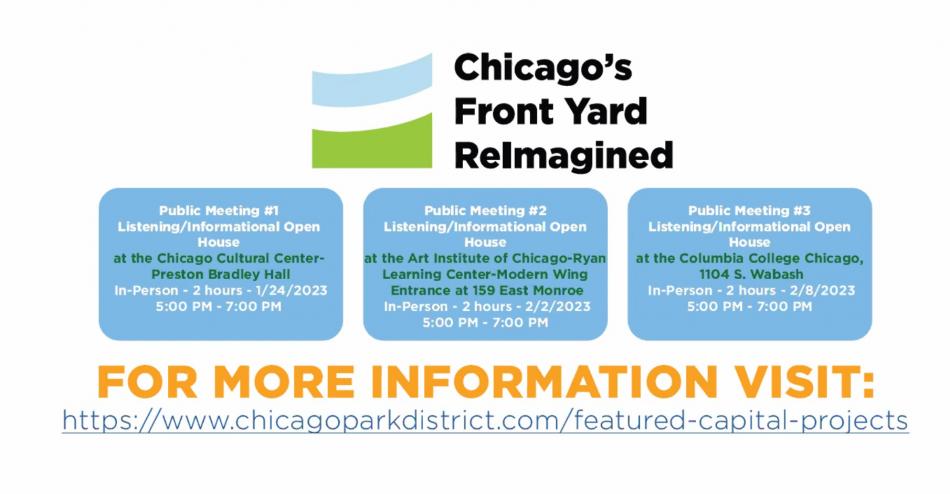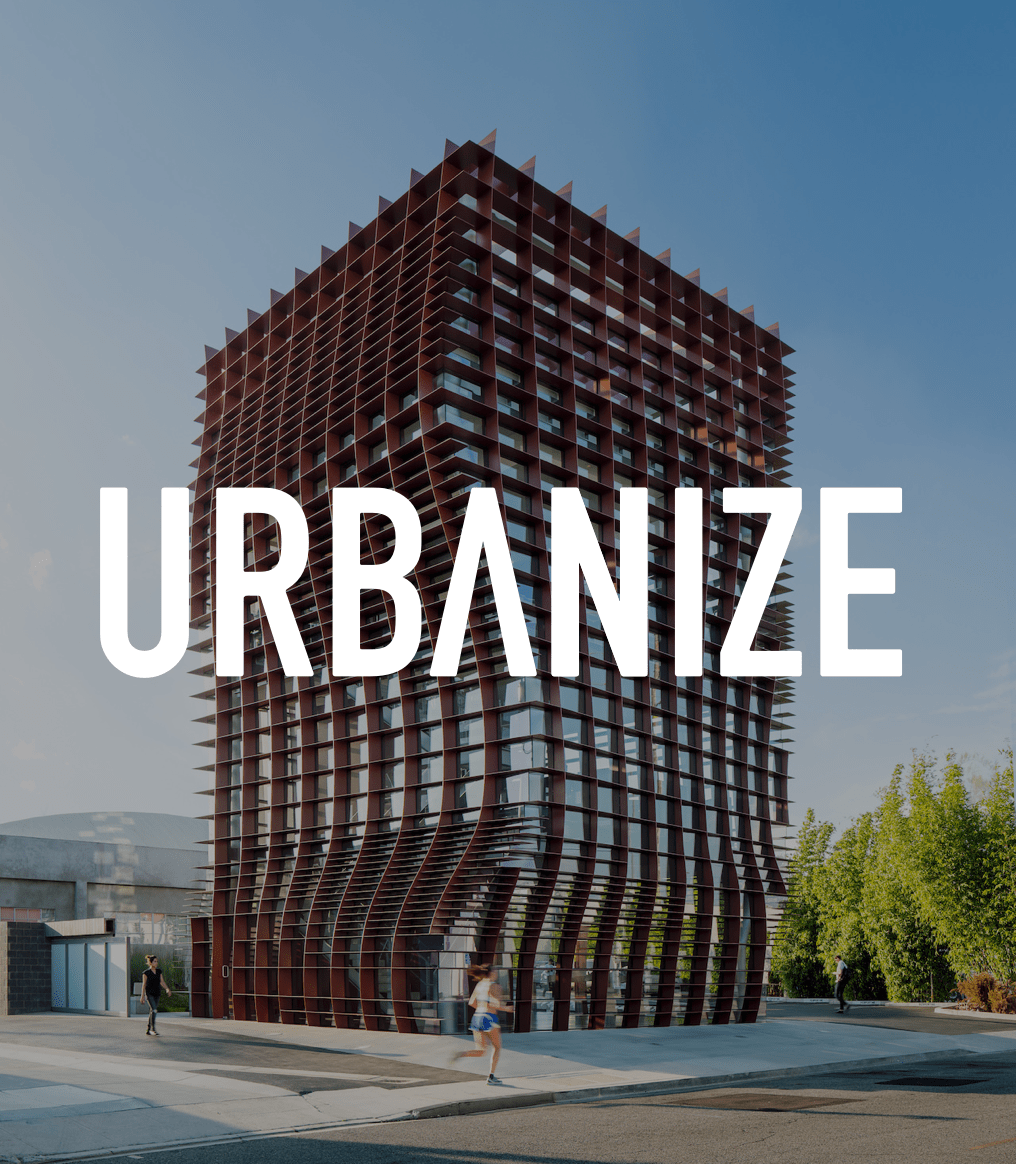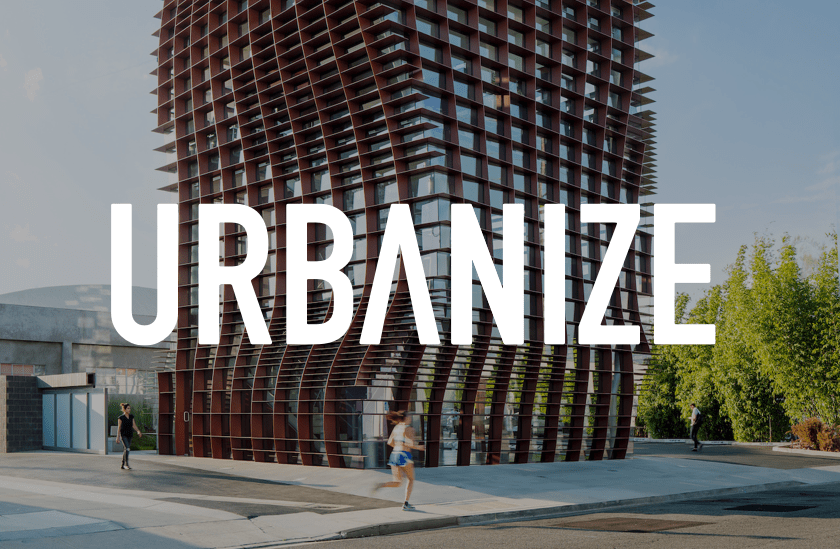The Chicago Park District opened their community engagement process for the revamp of the Grant Park Framework Plan. Dubbed ‘Chicago’s Front Yard Reimagined’ the effort looks to revisit and update the 2002 Grant Park Framework Plan that is now over 20 years old. Dating back to 1835, Grant Park was originally made to preserve green space from the rapid development occurring in the city.
Assembling a large team, the Chicago Park District has brought on UrbanWorks, APMonarch, Confluence, Brush Architects, WSSCG, and Engage Civil. Tasked with creating a comprehensive vision, the new framework plan will outline short- and long-term goals while creating a guide to evaluate future proposals and ideas. This vision will focus on the next 20 years after the previous plan reshaped Grant Park in the last 20 years.
The overall project has four phases. Already complete, the first phase lasted from March until June 2022, working on site verification and program analysis. Currently in Phase 2, this phase is the public engagement portion, beginning back in July 2022 and lasting until July 2023. While public feedback is being received, Phase 3 will begin this month. Lasting until August 2023, this phase will be the design and plan development portion of the project. After Phase 3, the project will be finalized between September 2023 and December 2023, where the final framework plan and report document will be drafted and implemented.
Presenting to the community yesterday, the meeting was the kickoff for the public engagement process of the overall framework plan revamp. While this is the beginning of open public engagement, the Chicago Park District has already been working with a group of stakeholders to identify early priorities. Overall themes from the stakeholder engagement have been preservation and landscape, recreation, events, safety and logistics, and mobility.
In the realm of preservation and landscape, common themes include making accessibility accommodations to the park’s historic elements, as well as making accommodations for all of the surrounding residents by adding a playground at the south end of the park and a dog park at the north end of the park.
For recreation, stakeholders have been interested in the park adjusting to current demands by skewing toward pickleball and soccer vs softball, for example. They would like to create more safe and effective spaces to accommodate activities that cater to seniors, while also helping children get involved with public art. Overall, the stakeholders expressed an interest in encouraging visitors of all ages from outside of the immediate area to come to the park.
In regard to events, stakeholders have given suggestions for improvements for events including dedicated staging areas, a system of secondary/service vehicle circulation (including golf carts), infrastructure for temporary stages, and barricade beautification. There have been shared values around minimizing restricted access to the park, keeping the park beautiful during events, “leaving no trace”, and respecting neighboring residents, businesses and institutions.
For mobility, there has been the sense that once visitors reach the park, movement is mostly via bikes and walking which can limit access and exploration for certain groups such as families and seniors. Other means of transportation, such as more Divvy stations throughout, people movers, designated golf carts, and free shuttle paths were suggested.
The final theme was safety, where stakeholders brought up the idea that safety and security concerns should not target any specific groups. There was also discussion around the priority that should be given to addressing traffic concerns on Columbus Dr, Lake Shore Drive, and midblock pedestrian crossings at E. Balbo Dr, E. Monroe St, and E. Jackson Dr, with solutions such as speed tables, striped crossings, curb extensions, and limiting the use of those roads.
The next steps for the project include three in-person public meetings that will happen this month and into February. After that, the framework will undergo design work before presenting the initial concept design to both stakeholders and another community meeting. After that, the plan will be finalized, presented once again, and finally implemented.




